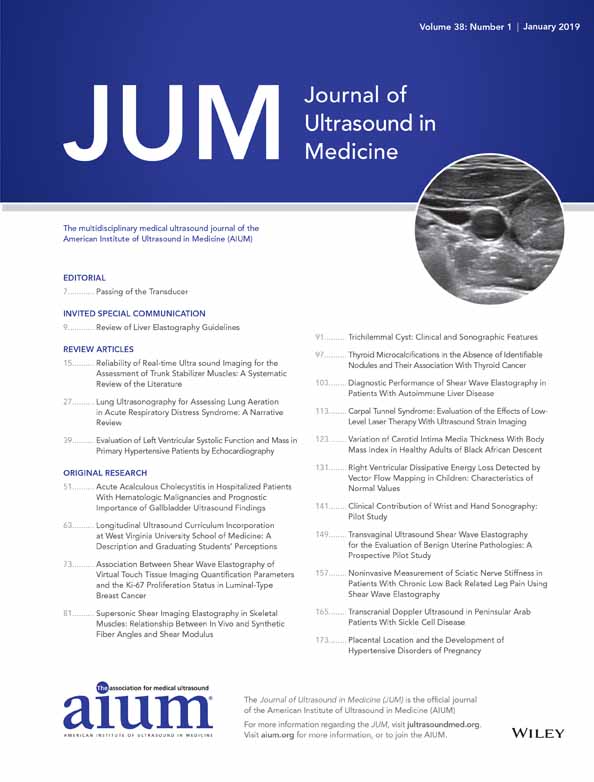Right Ventricular Dissipative Energy Loss Detected by Vector Flow Mapping in Children: Characteristics of Normal Values
Abstract
Objectives
The feasible application of vector flow mapping (VFM)–derived right ventricular (RV) energy loss (EL) is lacking. This study was designed to determine reference values of VFM–derived EL within the right ventricle and evaluate potential correlated variables.
Methods
A total of 90 healthy children were enrolled. Velocity vector fields of the intra-RV outflow tract and pulmonary trunk (OP) and RV blood flow were obtained from the parasternal short-axis view and RV focused apical 4-chamber view, respectively. RV-EL and OP-EL values during diastole and systole were calculated using VFM analysis. The potential relationships between demographic and echocardiographic parameters and the dissipative EL were also identified.
Results
Mean subject age was 8.99 ± 5.35 years. The median (interquartile range) values were 8.82 (5.47–14.30) W/m for RV diastolic EL, 3.17 (2.11–5.54) W/m for RV systolic EL, 18.82 (13.93–24.92) W/m for OP diastolic EL, and 29.88 (20.62–40.78) W/m for OP systolic EL, respectively. The dissipative EL values were negatively correlated with age and RV global strain, and positively correlated with heart rate and RV Tei index. Multivariate analysis showed that age was the primary independent predictor of these 4 types of EL, while heart rate and strain were contributors of the RV diastolic EL and OP systolic EL.
Conclusions
The present study initially validated the application of vector flow mapping–derived EL analysis in right ventricle and established reference values for the future assessment of children with cardiopulmonary disease. Age, heart rate, and strain were independent variables correlated with the dissipative EL.




